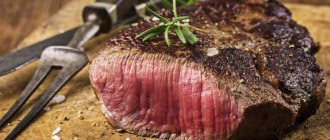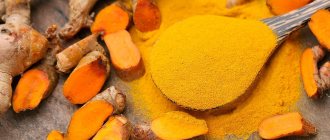Pangamic acid was first isolated from apricot kernels in the 20th century. Later it was discovered in cereal crops. Subsequently, the organic substance was given the name vitamin B15. The therapeutic effect of the combination of dimethylglycine with gluconic acid is still disputed by analysts in many countries and the tangible medicinal properties are not recognized. Scientists have found that the lack of ether has nothing to do with human metabolism, but experiments conducted in the USSR on rabbits indicate a positive effect of the substance on a living organism.
Biological role of vitamin B15
The functions of vitamin B15 make it a very valuable component for maintaining human health. Pangamic acid:
• Prevents excess accumulation of fat in the liver, prevents the development of diseases of this organ.
• Reduces a person’s tendency to become overweight • Participates in the formation of DNA and RNA, that is, the genetic material of cells • Important for the renewal of tissues, cells and their individual components • Participates in the production of phospholipids that protect blood vessels from atherosclerosis • Reduces the content of bad cholesterol in the blood • Participates in redox reactions, improves tissue respiration • Enhances the production of various adrenal hormones • Increases performance and endurance, relieves fatigue • Helps cleanse the body • Improves heart function • Strengthens the immune system • Reduces the harmful effects of drugs on the body • Exhibits some anabolic effect, promotes muscle growth with regular exercise • Has an anti-inflammatory effect • Helps normalize blood pressure.
Medicinal uses of pangamic acid
Vitamin B15 is extremely rare in its pure form, since it quickly oxidizes under the influence of oxygen and ultraviolet radiation. Therefore, in medical practice, calcium or sodium salts of pangamic acid (calcium or sodium pangamate) are used, which stimulate the endocrine glands (pituitary and adrenal glands), activate enzymatic transmethylation reactions, enhance the antioxidant defense of the body, increase the resistance of the body, in particular the myocardium, to oxygen. starvation." However, the clinical use of the vitamin compound for the treatment of gastrointestinal, nervous, cardiovascular, and musculoskeletal diseases is still being studied.
Let's consider in what cases calcium pangamate is used:
- Liver diseases. Vitamin B15, as part of complex therapy, helps increase the concentration of albumin in the blood, reduces the number of globulins to normal, thereby improving the albumin-globulin ratio. Along with this, the nutrient increases the level of creatinine in urine and blood, enhances diuresis and improves the patient’s well-being. Calcium pangamate is used for liver cirrhosis, chronic hepatitis, congestion due to alcoholism or circulatory disorders. The therapeutic dosage for intramuscular administration is 20 milligrams 2 times a day, for oral administration - 40 milligrams per day.
- Pathologies of the heart and blood vessels. Medicines containing pangamic acid are used to alleviate post-infarction and pre-infarction conditions. After administration of the compound, the enzymes of the respiratory chain are activated, creatine biosynthesis is enhanced, which is accompanied by an improvement in myocardial trophism. Pangamic acid is used to treat atherosclerosis, hypertensive heart disease, angina pectoris, coronary insufficiency (due to lipotropic and vasodilating properties). The daily dosage is selected by the doctor depending on the patient’s condition and the severity of the pathology (from 30 to 100 milligrams per day).
- Neurological disorders. Pangamic acid is prescribed as part of the complex treatment of cognitive disorders, hysteria, seizures, epilepsy, hydrocephalus, cerebral palsy, bedwetting in children, depressive states and psycho-emotional overload. In the “presence” of calcium pangamate, an element of group B (the hormone of happiness) is synthesized - choline, which is involved in the myelination of nerve fibers and strengthening the membranes of brain cells. Considering the fact that vitamin B15 improves tissue respiration and the transmission of impulses to neurons, it is successfully used in medical practice to combat sclerosis. This is evidenced by numerous studies by Dr. Benati. Thus, the scientist’s experiment involved patients suffering from hemiplegia and other pathologies of the central nervous system. During the experiment, patients were administered 25 milligrams of calcium pangamate per day (intramuscularly). At the end of the experiment, Benati testified that the patients had increased emotional status, decreased speech disorder and improved health.
- Diseases of the musculoskeletal system. Due to the fact that vitamin B15 reduces the irritating effect of salicylic sodium on the adrenal cortex and enhances the pharmacological properties of cortisone and acetylcholine, the compound is used as part of the complex treatment of rheumatoid arthritis.
- Elimination of intoxication. Considering the fact that calcium pangamate has antitoxic properties, the drug is used for acute poisoning with alcohol, drugs, tetracycline antibiotics, and chlorine-containing organic compounds. As a result of research, scientists noted that daily intake of vitamin B15 reduces the craving for drinking alcohol and drugs.
The therapeutic dose of calcium pangamate varies from 50 to 150 milligrams per day. The course of treatment is 18–40 days. If necessary, therapy can be repeated after 3 months.
Signs of vitamin B15 deficiency
Since small doses of vitamin B15 are produced in the body, it is rare to see a deficiency of pangamic acid. However, it is possible. Most often, a deficiency state manifests itself with nonspecific symptoms, which people for months and years attribute to fatigue, overwork, age and a general weakened level of health. Among the main symptoms of deficiency are a feeling of fatigue, cardiac problems, poor skin condition, early appearance of signs of aging, bad mood, irritability, and disturbances in hormone production.
Interaction with other substances
Vitamin B15 is a water-soluble compound that is easily destroyed by exposure to high temperatures and daylight. Briefly processing foods (for 5-7 minutes) over low heat under a tightly closed lid will help prevent nutrient loss.
Compatibility of vitamin B15 and other substances
- Calcium pangamate neutralizes the aggressive effects of toxic chlorine-containing substances, which, when inhaled, affect the mucous membranes of internal organs.
- Vitamin B15 reduces the severity of side effects that occur after the use of tetracycline antibiotics, excessive doses of aspirin and sulfonamide drugs.
- The simultaneous intake of calcium ascorbate (organic vitamin C) and pangamic acid leads to an increase in the antioxidant properties of both substances.
- Vitamin B15 potentiates choline synthesis.
- Pangamic acid enhances the pharmacological properties of beta-carotene, tocopherol and cyanocobalamin.
- The vitamin-like compound improves the absorption of corticosteroid and anti-tuberculosis drugs.
- Caffeine, nicotine, and alcohol reduce the concentration of the nutrient in the blood.
- Vitamin B17 enhances the oncoprotective properties of pangamic acid.
It is important to take these interactions into account when drawing up complex therapy for treating diseases.
Indications for additional use
Vitamin B15 has a positive effect after long-term use of antibiotics and tuberculosis medications. Scientists have found that, like thiamine, calcium pangamate:
- reduces blood pressure;
- increases oxygen levels.
For this reason, the drug is prescribed for the treatment of lung diseases and other cases of oxygen deprivation. Vitamin B15 is often prescribed to athletes. It is used: for:
- treatment of respiratory organs for acute respiratory viral infections;
- detoxification;
- prevention of neuroses;
- removal of toxins.
There is an opinion that due to the saturation of the body with oxygen, in case of malignant neoplasms, dietary supplements help suppress cancer cells, and the formation of metastases slows down. This property has not been scientifically proven, and the product only supports the patient’s immunity.
Causes and signs of deficiency
Isolated deficiency of vit. B15 is practically never found. As a rule, it is accompanied by a lack of other vitamins and vitamin-like products. The reasons can be very different: serious illnesses, infections, fasting, alcohol abuse, pathology of the gastrointestinal tract (gastrointestinal tract) with a deterioration in the absorption capacity of the intestine.
In this case, the main types of metabolism are disrupted, immunity is reduced, and pathological changes associated with hypoxia, atherosclerosis and impaired synthesis of biologically active compounds are formed in tissues. Symptoms of these disorders:
- general weakness, sleep disturbances, irritability, depression
- deterioration in concentration and memory
- decreased muscle strength and endurance, muscle and joint pain
- increased blood pressure
- increased frequency of angina attacks
- paresthesia (numbness, tingling) in some areas of the body
- digestive disorders with abdominal pain and stool disorders.
In children, a lack of vitamin B15 can affect overall development. In adults, the risk of cancer, diabetes, fatty liver disease, heart attacks and strokes increases.
General information and history of discovery
Pangamic acid (lat. Acidum pangamicum) in its pure form is an extremely unstable substance, therefore it is used only in the form of a salt - calcium pangamate (lat. Calcii pangamas).
The chemical formula of vitamin B 15 is C10H19NO8.
Systematic name: 6-(2-dimethylamino-acetoxy)-2,3,4,5-tetrahydroxy-hexanoic acid. The compound is an ester of dimethylglycine and gluconic acid.
The first discovery belongs to the Japanese scientist T. Tomiyama, who isolated the molecule from cow liver in 1950.
The name “pangamas”, derived from the Greek words “pan” - everywhere and “gami” - seed, was introduced into use after the presence of the substance in the bones and seeds of plants was established.
Symptoms of hypovitaminosis
Clinical symptoms may be blurred or disguised as other diseases. Often people with signs of vitamin deficiency are seen by an endocrinologist, cardiologist, gastroenterologist or therapist. Patients complain about:
- increased fatigue;
- decreased performance;
- muscle weakness;
- irritability, depressed mood;
- numbness, tingling in the limbs;
- interruptions in heart function;
- dryness, flaking of the skin;
- fragility, hair loss.
It is extremely difficult to confirm hypovitaminosis from the clinical picture, so the diagnosis is usually made by exclusion, and therapy is selected empirically.
Physicochemical characteristics
Due to the lability of chemical bonds, studying the properties of pure pangamic acid is difficult: it is destroyed under the influence of ultraviolet rays and high temperatures, and dissolves in water.
To produce drugs that have an identical biological effect, calcium pangamate is used, the chemical formula of which is [ COO ~ - CHOH - CHOH - CHOH - CH0HCH2OCOCH2N(CH3)2 ] 2Ca2+ -H2O.
The substance is a white powder, insoluble in alcohol and organic solvents, having a melting point of 132-140°, stable in acidic environments and rapidly decomposing in alkaline environments.
Release forms
Vitamin B15 (INN - calcium pangamate) is available in the form of tablets, as well as capsules in gelatin or vegetable shells. Absorption, assimilation and pharmacological effect are identical in all release forms.
The tablets are packaged in packs of 100 pieces and contain a mixture of pangamate, gluconate and calcium chloride in a ratio of 11:4:1, respectively.
Recipe in Latin:
Rp.: Calcii pangamatis 0.5
Dtd No. 100 in tabuletti
Signa: take 1-2 tablets 3 times a day.
Natural springs
Record holders for the content of pangamic acid or vitamin B15 are seeds and seeds of plants, nuts. The absorption of the substance from these products is the highest, since they contain fat-soluble vitamins A and E, which improve the absorption of pangamic acid.
Among products of animal origin, to enrich the diet with vitamins, we can recommend pork or beef liver, blood sausage. However, given the compound's thermolability, untreated plant sources are preferred.
The approximate content of vitamin B15 in food products is presented in the table:
| Product | Content per 100 g, mg |
| Sunflower seed, pumpkin | 0,2 |
| Nuts | 0,14 |
| Apricot kernels | 0,16 |
| Beef liver | 0,1 |
| Watermelon melon | 0,07 |
| Brown rice | 0,06 |
| Brewer's yeast | 0,05 |
Restrictions on use
The supplement is a good way to maintain physical activity, but people suffering from high blood pressure and glaucoma should not take additional B15. Pensioners are usually susceptible to diseases that increase intraocular pressure.
Children are prescribed with caution. Women are prohibited from taking a mineral supplement while breastfeeding, as the substance is mixed into milk. Pregnant women take any medications only as prescribed by the doctor, including vitamins.
Daily norm
The exact amount for humans has not yet been determined. Analysts claim that 2 mg is a sufficient amount and increase it in the diet only during increased physical activity or according to medical recommendations.
Lack of vitamins causes various diseases. Even with a balanced diet, not all substances are absorbed. Some of them are washed out or destroyed. Alcohol, for example, kills all B vitamins. Pangamic acid is no exception. Doctors advise taking a set of vitamins that are compatible with each other.
Dosage of "Calcium Pangamate"
Additional intake of vitamin B15 is prescribed by a doctor if there is a lack of vitamin in the body.
It is believed that an adult needs to take 100-300 mg 3-4 times a day.
Children under 3 years of age are prescribed 50 mg of the vitamin, and from 3 to 7 years old - 100 mg.
Between the ages of 7 and 14 years, you need to take 150 mg of vitamin B15.
The course of treatment is prescribed for 20 days, then there is a break for 2 months, after which the course is allowed to be repeated.
The drug is taken orally, 1 hour before a meal, or 4 hours after a meal.
Self-medication and prescription of the drug are prohibited. Before taking, you should consult your doctor.







